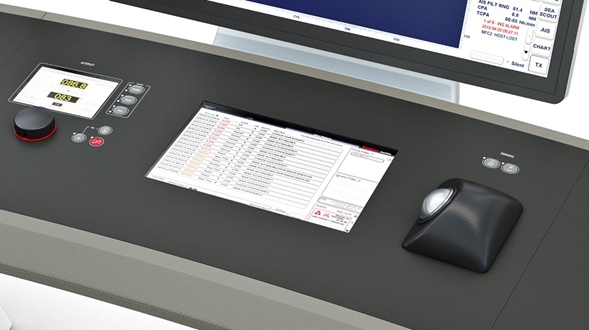The Real Seamless Bridge
Integrated bridge systems found on superyachts have significantly improved in the past years, with a major focus on navigation system integration and multifunctional displays. However, there are still lots of different hardware controls for non-navigation…

Integrated bridge systems found on superyachts have significantly improved in the past years, with a major focus on navigation system integration and multifunctional displays. However, there are still lots of different hardware controls for non-navigational systems on the bridge. These are not only an issue with regard to a common operating philosophy and for the visual appearance of the wheelhouse but also lack flexibility when it comes to new or changing systems.
“We all are used to download apps, move or remove to optimize function on our tablets“, Tobias Grunwald, Sales Director at Raytheon Anschütz, states. “With regard to the bridge system we needed to ask ourselves: Is having a separate hardware for a dedicated function still state-of-the-art?”
For a first superyacht project in Germany Raytheon Anschütz now imports functions, which have been previously operated from inhomogeneous hardware devices on the bridge, to software. 12.1” Touch Panel-PCs are introduced as the hardware platform to control existing or even new functionalities, including but not limited to window wipers, air horn, search lights, interior and exterior lightings, stern and bow thrusters, pumps, KVM switches, power management and dimming. The Touch Panel are the ideal complement to existing foil panel solutions for rudder steering, DP system or engine controls.
The external hardware is interfaced “below the surface” - either with the PCs directly or via the new central data collectors within the bridge system. The GUI is built upon Raytheon Anschütz’ recently unveiled Conning NX software and is in line with all the other navigational applications.
“Conning NX is a versatile and extremely capable software” Grunwald explains. “It was developed on the valuable feedback from users and customers and focusses particularly on the flexible configuration of display pages.”
The software features a stock of flexible graphical elements – just like widgets – which can be selected, adapted and combined as needed. Customer-specific, switchable elements can be created for dedicated functional pages and to actuate the respective hardware interfaces. Operators can swap between the pages with a single fingertip, making the panel PCs a capable multifunctional device.
Last but not least the flexible software elements will enable an easy adaptation or upgrade to changing requirements and new functionalities in future. Move the search lights to a different position? Period. Replace the window wiper system? You don’t even need to touch the surface!
The benefits are obvious: The actual number of devices on the bridge is significantly reduced, a direct contribution to complexity reduction and ease of use. The devices follow the same graphical look and feel; furthermore the graphical HMI of the touch panel will be the same as of the navigational displays.
“What we already know from the automobile or aviation industry will be realized for the first time aboard a superyacht bridge - a tidy system layout with a real seamless look and feel of all core control systems”, Grunwald confirms. “Its focus on flexibility, lean design and functionality let the Touch Panels also be well in line with further improvements to Integrated Bridge Systems.”
In fact – bulky consoles for a dedicated function only, with comprehensive hardware and basic interfacing, and inflexibility with regard to future adaptation – this was yesterday. Modern Integrated Bridge Systems enable the Captain to control any navigational application from any workplace. By a higher degree of integration key requirements such as harmonization of systems, data quality improvement and intelligent alert handling are addressed to reduce workload and stress. Modular foil panel solutions are in place to provide a common look and feel for the indispensable hardware controls of rudder steering, DP system and main engine.
The development won’t stop here. Driven by user experience and customer expectation, technological advances and industry research the next innovations will definitely show up soon. The key challenge will remain bringing together rules and regulations with individual expectations and technical feasibility. Tobias Grunwald concludes: “It is our job to ensure both: A superior bridge which exceeds expectations and the reliable performance to ensure safe and straightforward cruising at all times.”
The entity that submits this press release to SuperyachtNews.com hereby accepts sole responsibility for the facts, accuracy and completeness of the content. All content and mediums submitted are an acknowledgement of the suitability for publication. SuperyachtNews.com accepts no liability or responsibility for any inaccuracies or errors made by the submitter in this regard.
Click here to become part of The Superyacht Group community, and join us in our mission to make this industry accessible to all, and prosperous for the long-term. We are offering access to the superyacht industry’s most comprehensive and longstanding archive of business-critical information, as well as a comprehensive, real-time superyacht fleet database, for just £10 per month, because we are One Industry with One Mission. Sign up here.



